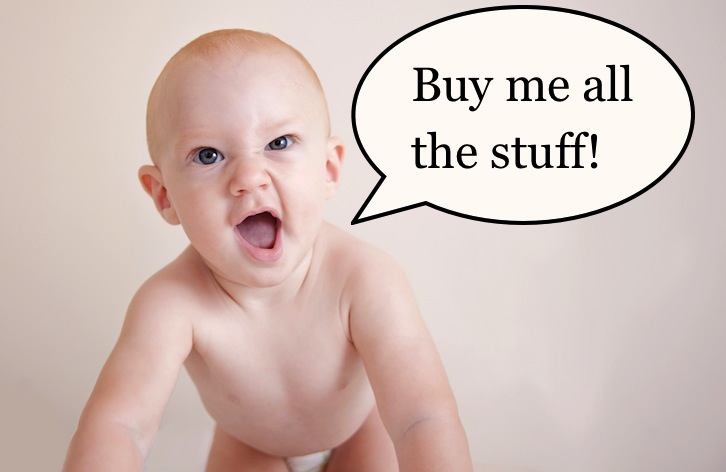Tom Leung is a former Google executive and the current CEO of Yabbly
There are over 2,000 startups on AngelList that are categorized as “social commerce.” That’s equivalent to every Stanford MBA over the last 5 years starting a brand new social commerce company.
It’s an alluring cocktail, isn’t it? Combining social and shopping, and a little bit of mobile, feels lucrative, logical and the absence of a clear market leader is enough to drive entrepreneurs and investors into frenzy.
 Now that we’ve had a couple of years to see the early entrants into social commerce fray struggle to really crush it the way startups have in messaging, photo sharing, or taxi hailing status, it’s worth asking – why? We’ve seen no shortage of co-shopping plugins, referral networks, and second generation social networking adaptations applying proven playbooks to social commerce (e.g. a “Facebook for shopping,” or a “Yelp for shopping” or in Yabbly’s first year, a “Quora for Shopping”).
Now that we’ve had a couple of years to see the early entrants into social commerce fray struggle to really crush it the way startups have in messaging, photo sharing, or taxi hailing status, it’s worth asking – why? We’ve seen no shortage of co-shopping plugins, referral networks, and second generation social networking adaptations applying proven playbooks to social commerce (e.g. a “Facebook for shopping,” or a “Yelp for shopping” or in Yabbly’s first year, a “Quora for Shopping”).
Yet to this day, no one has really challenged Amazon and Google for their respective roles in the shopping and research process.
Perhaps with the exception of Pinterest for fashion, most of us still go to the same places we’ve been going for years when we’re in buying mode (read some reviews on a popular blog, news articles from traditional media, watch some unboxing videos, Google it, and eventually end up on Amazon to seal the deal … or ask a friend at work).
Eventually we’ll probably see someone emerge with a truly game-changing solution that vastly alters and changes the product purchase cycle, but it won’t be easy. Speaking from the trenches, here are some of the reasons cracking social commerce isn’t a walk in the park.
1. It’s not an excruciatingly painful problem
When it comes to product discovery, Facebook, Pinterest, and Twitter do a pretty good job of helping you learn about cool products. When it comes to product selection and purchase, Amazon, while a bit boring, does a good enough job that no one is cursing at them the way they would a taxi company.
Thus, anyone looking to really crack this is going to have to come up with a 10X solution.
We recently surveyed a two hundred active online shoppers and it was interesting to see that discovering new products or recommending products to friends was extremely low on consumers list of shopping pain points.
2. People either want to browse or buy
People seem to either be in pure “inspire me” (there’s a Pinboard for that) mode or “let me just get it” (Amazon) mode.
The area in between exists but it’s not something where people want to spend a lot of time inside an app. They mull it over but in a much more organic and serendipitous way across multiple formats and experiences.
3. People are looking for unicorn experts
People are open to getting advice from experts they can trust and who will offer personalized advice in a timely manner.
But finding an expert who can give them the help they need at the precise moment they need it is a tough market to seed. Everyone wishes they could have a conversation with the guys at Wirecutter about headphones or had a cousin who works for BMW about sports sedans – that’s a high bar for any emerging platform to meet.
4. People want help instantly
With Facebook and Twitter delivering near instant gratification, people’s expectations around personalized and affirming help on buying a product is also measurable in seconds.
If they have to do a bunch of clicks or wait for friends or other members to engage on a product decision, they’ll probably just bail.
5. People are increasingly skeptical of joining yet another platform
Unless it’s a 10X solution or hits a very discrete pain point instantly, people are increasingly leery of joining yet another service that will require them to invest a lot of time and energy. Early social adopters will always be there but with Facebook, Twitter and Pinterest, the oxygen for a fourth and fifth offering is pretty thin.
All of that said, people spend nearly $5 trillion on new products every year in the U.S.
Thus, transforming how people buy new products continues to be a prize worth winning and I suspect a lot of those 2,000 startups are now experimenting with all sorts of even more innovative approaches to crack this market. One thing is for sure, 10 years from now we’re not going to just discover, select and purchase a product by searching on Amazon (at least not anything like Amazon does it today). But it’s going to take more than looking at the last decade’s social networking winners and applying their recipes to shopping.
The good news is with so many folks taking shots on goal, someone is going to figure it out sooner or later!
Tom Leung is a former Google executive and the current CEO of Yabbly, an online community and iPhone app for making thoughtful product decisions.
VentureBeat's mission is to be a digital town square for technical decision-makers to gain knowledge about transformative enterprise technology and transact. Learn More

